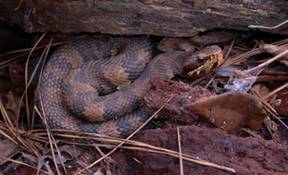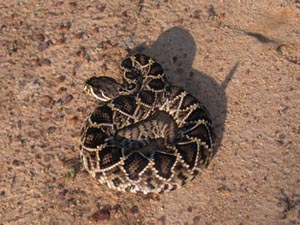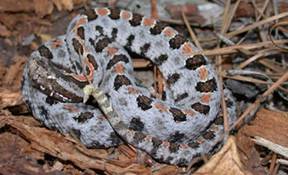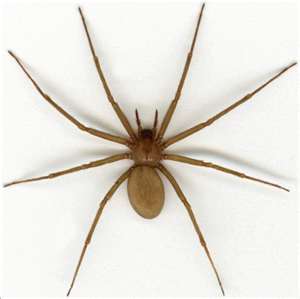Upcoming Trails
- 05/13 - #1171 FFTP, Mystery Hare
- 05/20 - #1172 Open
- 05/27 - #1173 Open
- 05/27 - #1174 Shi-Thai
(All adults 21+ of age are welcome at each event - just show up)

Savannah Wildlife
Savannah's dangerous wildlife... beware, you might see tem on trail!
 Alligator
Alligator
The alligator is notorious for its bone-crushing bites. A large adult American alligator's weight and length can grow to over 1000 pounds and 14 feet long.
Although alligators have a heavy body and a slow metabolism, they are capable of short bursts of speed, especially in very short lunges. Alligators may kill large prey by grabbing it and dragging it into the water to drown. They consume food that cannot be eaten in one bite by allowing it to rot, or by biting and then spinning or convulsing wildly until bite-size chunks are torn off. This is referred to as a "death roll."
Most of the muscle in an alligator's jaw evolved to bite and grip prey. The muscles that close the jaws are exceptionally powerful, but the muscles for opening their jaws are comparatively weak. Alligators are generally timid towards humans and tend to walk or swim away if one approaches However, alligators are solitary and can be very territorial animals that will defend prime territory.
 Copperhead
Copperhead
Copperheads are– 24 - 40 inch, heavy-bodied snakes with large, triangular heads and elliptical pupils (cat eyes). The body is tan to brown with darker hourglass-shaped cross bands down the length of the body. Individuals from the Coastal Plain often have cross bands that are broken along the center of the back. The head is solid brown, and there are two tiny dots in the center of the top of the head. Juveniles resemble adults but have a bright yellow tail tip. As pit-vipers they have facial pits that sense heat and are used to detect prey and predators.
 “Cottonmouth” Water Moccasin
“Cottonmouth” Water Moccasin
Cottonmouths are venomous semi-aquatic snakes often referred to as “water moccasins.” They have large, triangular heads with a dark line through the eye, elliptical pupils, and large jowls due to the venom glands. They are typically 24 - 48 inches long, occasionally larger, keeled-scaled, heavy-bodied snakes. Their coloration is highly variable: they can be marked with dark cross bands on a brown and yellow ground color or completely brown or black. Older adults are often dark and solid-colored whereas the juveniles are brightly patterned with a yellow tail tip that they wiggle to attract prey. The belly typically has dark and brownish-yellow blotches with the underside of the tail being black. As pit-vipers they have facial pits that sense heat and are used to detect prey and predators.
Cottonmouths can be found during the day or night, but forage primarily after dark during the hotter parts of the season. Cottonmouths bask on logs, rocks, or branches at the water's edge but seldom climb high in trees (unlike many of the nonvenomous water snakes which commonly bask on branches several feet above the water). They employ both ambush and active foraging strategies. The cottonmouth receives its name from the whiteness of the interior of its mouth that it exposes as a defensive display. This species is often confused with nonvenomous water snakes, but water snakes typically flee immediately if on land or in a tree, usually going underwater, whereas cottonmouths frequently stand their ground and gape to deter a predator. Despite their aggressive reputation, research has indicated that cottonmouths will seldom bite unless stepped on or picked up. When not alarmed, cottonmouths can be readily recognized when swimming because most of their body is above the water's surface.
 Diamondback Rattlesnake
Diamondback Rattlesnake
The eastern diamondback is the largest of the rattlesnake species. They are heavy-bodied snakes with large, broad heads with two light lines on the face. Adults are usually 33-96 inches long. Mature snakes can tip the scales at over 10 lbs. The background color is brown, tan, or yellowish and covered with the namesake diamonds, which are brown and surrounded by lighter scales. This species usually inhabits dry sandy areas, palmetto or wiregrass flatwoods, pinewoods, coastal dune habitats, or hardwood hammocks. They generally avoid wet areas but sometimes live along the edges of swamps. They are accomplished swimmers and even travel through saltwater to and from barrier islands. Like most large pit vipers eastern diamondbacks spend most of their time coiled in palmetto thickets or other thick vegetation to ambush prey. Most movement between locations occurs during the day, and is mostly restricted to the morning and evening in summer.
 Timber Rattlesnake
Timber Rattlesnake
Timber rattlesnakes are large, heavy bodied snakes with the characteristic rattles on the end of the tail. Adults range from 30-72 inches long. They are usually gray and may even have a pink hue and a pinkish, yellow, orange, or brown stripe they are frequently brown or yellowish and may even be black. Both forms have solid black tails that appear almost velvet and black chevrons on the back and sides with the point of the (V) pointing forward.
This snake occurs in a wide variety of habitat including lowland cane thickets, high areas around swamps and river floodplains, hardwood and pine forests.
These rattlesnakes are docile when encountered in the wild and often will remain coiled or stretched out without moving. If threatened, however, they will not hesitate to deliver a serious bite.
 Pigmy Rattlesnake
Pigmy Rattlesnake
This 14–22 inch rattlesnake is commonly referred to as a pigmy rattler. Unlike the larger rattlesnakes this species has nine large scales on top of the head and a tiny rattle that can seldom be heard. The color can vary from black to brownish red. An orange or reddish brown dorsal stripe is also present on both subspecies. The dusky pigmy ranges from bluish gray to nearly black.
This snake is found in the northeastern, northwestern, and central portion of Georgia and throughout South Carolina. Dusky pigmy rattlers inhabit the southern Coastal Plain area and inhabit areas near water sources like creeks, marshes, and swamps but can be found in a variety of habitats including pine and scrub oak sandhills, scrub pinewoods, mixed forests of pine and hardwoods, longleaf pine-wiregrass forests, swamps, and even xeric uplands.
 Coral Snake
Coral Snake
Adult eastern coral snakes are slender, 18-48 in length. They have smooth scales and their most obvious feature is the bright body pattern of red, yellow, and black rings in which the red and yellow rings touch each other. The nose is black. The coral snake is the only eastern species of snake with a pair of fixed fangs in the front of the mouth.
The eastern coral snake is found in pine and scrub oak sandhills habitats in parts of their range but sometimes inhabit hardwood areas and pine flatwoods that undergo seasonal flooding.
 Brown Recluse Spider
Brown Recluse Spider
Brown recluse spiders of a characteristic fiddle-shaped pattern they have on their head region. The spider is golden brown with the fiddle being dark brown or black. This spider is not hairy and the fiddle pattern is often shiny. They are about 1/4 to 3/4 inch long. Members of this small family are known for their poisonous venom. They have six eyes in three pairs. The cephalothorax is rather flat above and has a conspicuous, lengthwise furrow in the midline at the rear third. Each foot has two claws.
Brown Recluse spiders spin small, irregular webs under bark, stones or other secluded areas. Their venom is especially poisonous to people; those bitten often become ill and find that the wound does not heal quickly. Brown recluse spiders are capable of injecting venom which may result in serious lesion formation or systemic reactions. The severity of the bite may vary. The symptoms may vary from no harm at all to a reaction that is quite severe. Usually, the brown recluse spider bite is not felt and the pain sets in from six to eight hours later. A typical bite area may resemble a pimple, pustule or blister formation within six to 12 hours later. Mild to severe pain accompanied by swelling may occur during this interval. The surrounding tissue begins to darken, is irregular in shape with sharply raised edges resulting in a sunken area which may be several centimeters in diameter. Often there is a systemic reaction within 24-36 hours characterized by restlessness, fever, chills, nausea, weakness, and joint pain. Where the bite occurs there is often tissue death and skin is sloughed off. In some severe cases, a wound may develop that lasts several months. In all cases, a physician should be notified. If at all possible, kill and take the spider to the physician for positive identification. Individual spiders can be crushed underfoot or sprayed with an aerosol spray.
Brown recluse spiders are found in Georgia. The brown recluse spider is nocturnal and prefers food such as crickets, cockroaches and other soft bodied creatures. Earning their name well, the brown recluse spider ceases its wanderings at first light.
 Black Widow Spider
Black Widow Spider
The male black widow’s abdomen is more elongated than that of the female, with white and red markings on its sides. The female’s abdomen is almost spherical, usually with a red hourglass mark below or with 2 transverse red marks separated by black. The legs of the male are much longer in proportion to his body than that of the female. The female is the most easily recognized, her shiny black body giving great contrast to the red hourglass marking on her round abdomen.
The black widow’s range includes Georgia. Black widow spiders are common around wood piles and unbothered places.
Of all spiders, the Black Widow is the most feared. The female’s venom is especially poisonous to people. Despite its reputation, this spider often attempts to escape rather than bite, unless it is guarding an egg mass or if it is cornered and pressed.
The bite of the female black widow spider may not always be felt at first and besides slight local swelling, there is usually little evidence of a lesion. Two tiny red spots can sometimes be observed in the center of the swollen area. Most of the time, pain at the site of the bite occurs immediately and becomes most intense after about three hours. An overall aching of the body, especially the legs, are common reactions. Headache, elevated blood pressure, nausea and profuse perspiration may occur in severe cases. The condition is self-limiting and in most cases symptoms disappear in two or three days. Calcium gluconate is used intravenously to relieve and relax muscle spasms produced by black widow venom. Black widow bites are sharp and painful, and the victim should go to the doctor immediately for treatment.
 Banana Spider (Non-venomous)
Banana Spider (Non-venomous)
Banana spiders vary from reddish to greenish yellow in color with distinctive whiteness and the beginning of the abdomen. They have striped legs specialized for weaving. Their contrast of dark brown/black and green/yellow allows warning and repelling of potential predators to whom their venom might be of little danger. They reach sizes of 1.5 to 2 inches in, not including leg span, The largest specimen ever recorded was 2.7 inches. The venom of the Banana Spider is potent but not lethal to humans. It has a neurotoxic effect similar to that of the black widow spider; however, its venom is not nearly as powerful. The bite causes local pain, redness, and blisters that normally disappear within a 24-hour interval. In rare cases, it might trigger allergic reactions and result in respiratory troubles (in asthmatics) or fast-acting involuntary muscle cramps.
They are widespread throughout Southeast Georgia and build large yellow webs for capturing prey.